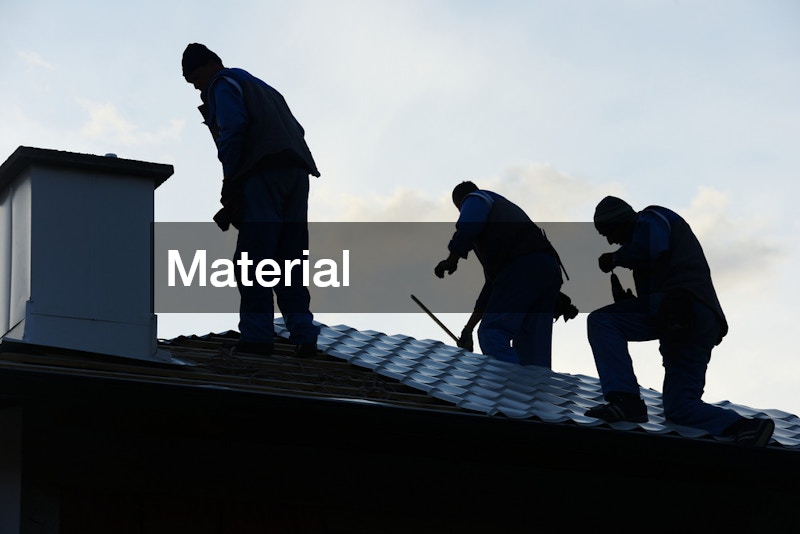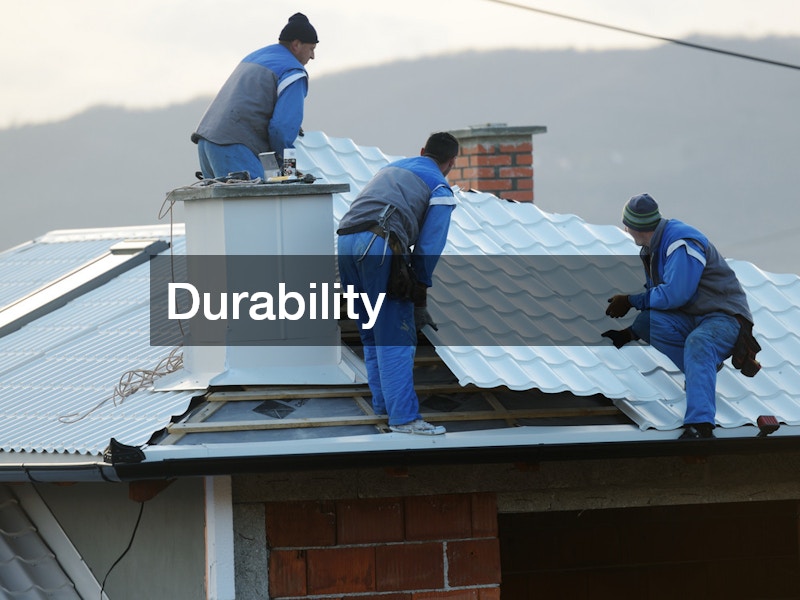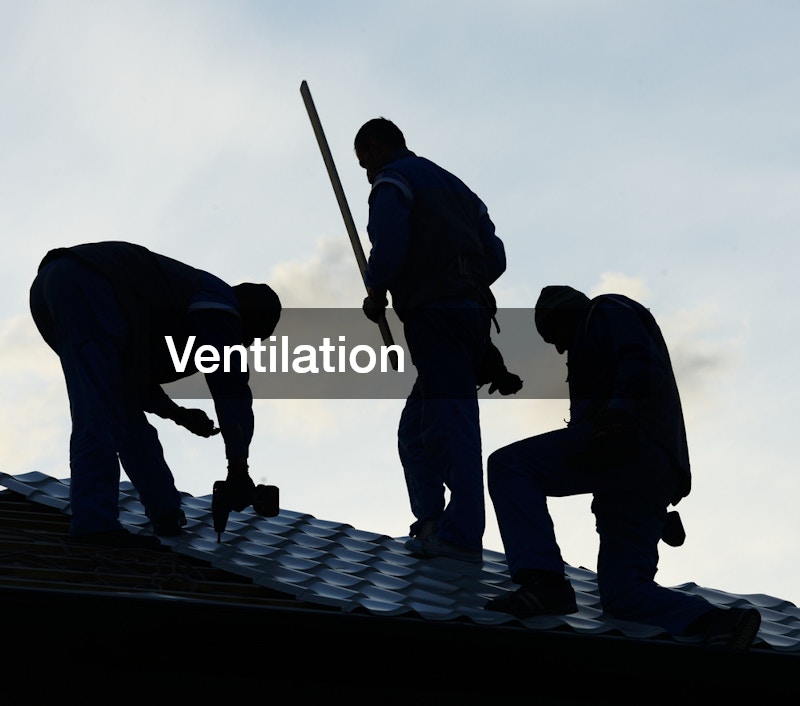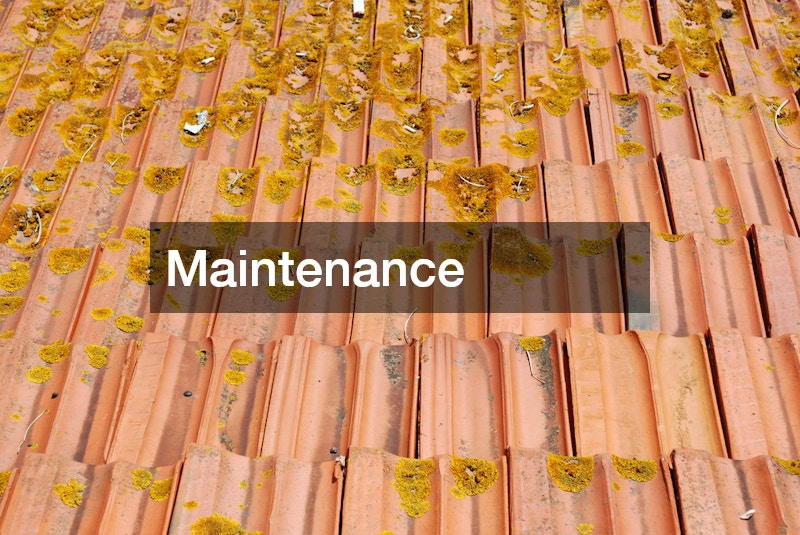Understanding the Things That Make a Good Roof


A good roof is one of the most significant investments a homeowner can make for their property. Not only does it protect the home’s structure and its occupants from the elements, but it also adds value and enhances curb appeal. With the myriad of materials and services available for residential roofing, selecting the right components for a good roof can be a complex process. This article aims to simplify that process by detailing crucial aspects that contribute to a good roof, including material choice, durability, water resistance, installation, and more. Whether you’re considering a new roof or seeking information on maintaining an existing one, understanding the facets of a good roof is essential. We will dive into the significance of these features, explore the professional services available, and provide guidance on making informed decisions about your roofing needs. From durability and resistance to aesthetics and maintenance, each section of this article offers insights and expert tips that will help ensure your roof not only survives but thrives over the years. Join us on this journey through the world of roofing, where structure meets style, and functionality meets reliability.
Material

The foundation of a good roof starts with selecting the right material. Residential roofing materials vary widely in terms of cost, durability, and aesthetics, with choices ranging from asphalt shingles to metal, tile, and slate. Each material has its advantages and potential drawbacks that homeowners should consider based on their specific needs and budgets. For instance, asphalt shingles are one of the most popular roofing materials due to their cost-effectiveness and easy installation. Despite their popularity, they may not last as long as metal roofs, which offer excellent durability and energy efficiency. Metal roofing, however, comes with a higher initial cost, which might be a deterrent for some homeowners. For those seeking an even longer lifespan and unique aesthetic, slate and tile roofs can last for centuries with proper maintenance, albeit with higher installation costs and structural considerations due to their weight. Consulting with roofing contractors can provide valuable insights and help in selecting materials that balance these factors to meet the homeowner’s preferences and expectations for a good roof.
Besides durability and cost, the climatic conditions of the area also play an essential role in material selection. Residential roofing services often assess local weather patterns to recommend materials that withstand the specific challenges posed by the climate. For example, areas prone to heavy rainfall or snow loads might benefit from metal roofing due to its excellent shedding properties. Similarly, regions with intense sunlight might prefer cool roofs with reflective surfaces to help minimize heat absorption and lower cooling costs. A good roof should not only meet the homeowner’s aesthetic goals but also provide practical solutions to these environmental challenges, enhancing the overall energy efficiency of the home.
Durability

Durability is a defining characteristic of a good roof. It ensures that the structure withstands the test of time and weather without frequent repairs or replacements. Residential roofing services often emphasize the importance of choosing materials and designs known for their long-lasting qualities. A durable roof translates to peace of mind, as homeowners can rely on their roof’s ability to protect their home for decades. When considering durability, it’s crucial to evaluate not only the lifespan of the materials but also the ability to withstand local environmental challenges, such as high winds, hail, or extreme temperatures.
Regular maintenance and timely repairs conducted by professional roofers can further enhance a roof’s durability. These experts provide essential services such as cleaning, inspecting for damage, and replacing worn or damaged components to prevent minor issues from escalating into major problems. By proactively addressing potential issues, homeowners can extend the lifespan of a good roof and ensure that it continues to perform optimally over time. Investing in residential roofing services for regular inspections and maintenance is a wise decision that can save significant costs in the long run.
Water Resistance
Water resistance is another critical component of a good roof, protecting your home from the potential damage caused by leaks and moisture infiltration. Effective water resistance is achieved through a combination of high-quality materials and precise installation techniques. Roofing inspection services play a vital role in ensuring water-tight integrity by identifying and addressing vulnerabilities before they become problematic. Regular inspections allow homeowners to detect issues such as damaged shingles, inadequate sealing, or clogged drainage systems, which can compromise the roof’s ability to resist water penetration.
In addition to inspections, many roofing companies recommend implementing underlayment systems that act as a secondary barrier against water infiltration. These systems are especially crucial in areas prone to heavy rainfall or snow, where water resistance is paramount. A good roof is constructed with careful attention to detail, employing membranes, flashings, and sealants designed to channel water away from the roof and prevent seepage into the interior. Residential roofing services can install these additional protective layers to augment a roof’s water resistance and provide extra security against potential leaks.
Installation
Proper roof installation is vital to achieving the attributes of a good roof, ensuring both durability and functionality. The process of roof installation requires precision and expertise to guarantee that the roof is both secure and aesthetically pleasing. Whether replacing an old roof or installing a new one, selecting the right roofing company with a proven track record is essential to achieving a successful outcome. These companies have skilled professionals who understand the intricacies of different materials and the necessary techniques to apply them effectively.
A good roof installation process begins with a thorough assessment of the roof’s structure and substrate. This step involves checking for any damage, rot, or structural weaknesses that need to be addressed before laying new materials. Ensuring that the underlying structure is sound is crucial for supporting the new roof and maintaining its integrity over time. The installation process also involves precise measurement and cutting of materials, as these steps determine how well the components fit together and function as a cohesive unit. Attention to detail during installation is paramount for achieving the long-term benefits of a good roof.
Ventilation

Proper ventilation is a crucial aspect of maintaining a good roof, as it ensures the longevity and efficiency of the roofing system. A well-ventilated roof reduces moisture buildup in attics and keeps temperatures stable, preventing damage to roofing materials over time. Without adequate ventilation, heat and moisture can accumulate, leading to issues such as mold growth, weakened structures, and reduced energy efficiency. Integrated ventilation systems help regulate air flow, creating a balanced environment that supports both the structural integrity and the comfort of the home.
Roofers implement a variety of ventilation solutions tailored to different roof designs and climates. The goal is to create intake and exhaust vents that facilitate a continuous flow of air through the attic space, maintaining an optimal balance between heat and humidity. A good roof combines effective ventilation with other design elements to ensure long-term protection against weather extremes. Roofers play a vital role in recommending appropriate ventilation strategies that align with the homeowners’ specific needs, improving both indoor air quality and roofing durability.
Drainage
Effective drainage is paramount for ensuring the longevity and performance of a good roof. A well-designed drainage system prevents water pooling, minimizes the risk of leaks, and protects the structural integrity of the roof and building. Different roofing styles require unique drainage solutions to accommodate their designs and materials. Professional roofers work to implement drainage systems that complement the roof’s design, ensuring efficient water flow and mitigating potential damage caused by excess water.
Gutters, downspouts, and flashing play integral roles in directing water safely off the roof and away from the foundation. Routine inspection and maintenance of these components by local roofers ensure they remain clear of debris and are in good working condition. Clogged or damaged drainage systems can lead to overflow, causing water to seep into the roofing materials or even the building’s interior. A good roof incorporates robust drainage solutions designed to handle heavy precipitation and maintain the structures’ safety and comfort.
Insulation
Insulation is a critical element in the construction of a good roof, contributing to both energy efficiency and comfort within the home. By minimizing thermal transfer, a well-insulated roof helps maintain a consistent indoor temperature, reducing the need for excessive heating or cooling. Homeowners can see significant energy savings with a properly insulated roof, making insulation both an environmentally friendly and cost-effective choice. Roofing contractors can recommend the appropriate insulation materials and methods based on the specific needs and structural characteristics of each home.
Various insulation materials, such as fiberglass, foam, and reflective coatings, are utilized in roofing systems to achieve optimal thermal resistance. Each material offers unique benefits and installation methods, allowing for customization based on the building’s requirements. A good roof incorporates insulation as a part of its design to enhance energy efficiency and ensure the home remains comfortable throughout the year. Roof installation specialists work diligently to integrate insulation seamlessly into the overall roofing structure, maximizing its effectiveness.
Maintenance

Regular maintenance is essential for preserving the integrity and functionality of a good roof. Proactive upkeep minimizes the risk of damage, extends the roof’s lifespan, and enhances its overall performance. Local roofers offer valuable services that help homeowners maintain their roofs in optimal condition, addressing issues such as debris removal, minor repairs, and inspections. By investing in routine maintenance, homeowners can avoid costly repairs and replacements, ensuring their roofing investment remains sound and effective.
Scheduling regular inspections with roofing inspection services allows for early detection of potential problems, such as missing shingles, leaks, or damaged flashing. These inspections provide insights into the roof’s current state and highlight areas needing attention. Addressing these issues promptly helps maintain the roof’s protective capabilities and ensures that it remains a good roof for years to come. Professional roofers have the skills and experience to conduct thorough evaluations, offering recommendations and solutions that align with the homeowner’s needs and budget.
Aesthetic
The aesthetic of a good roof significantly affects a home’s curb appeal and overall value. Roofs contribute to the visual identity of a property, making the selection of materials, colors, and designs paramount. Roofing contractors offer a wide array of options to match diverse architectural styles, enabling homeowners to create a cohesive, attractive exterior. Decisions about aesthetics should balance design preferences with the functional requirements of the roof, ensuring that beauty does not come at the expense of performance.
Material selection is a key factor in achieving the desired aesthetic for a roof. Options such as asphalt shingles, wooden shakes, metal panels, and ceramic tiles each offer distinct looks, accommodating a variety of architectural styles from traditional to contemporary. Beyond material, color choices impact the roof’s integration with the rest of the home’s exterior. Roofing companies provide extensive palettes to help homeowners select shades that enhance their property’s design, achieving a harmonious blend of form and function.
Conclusion
A good roof is an indispensable component of any residential property, expert in performing vital functions ranging from protection to insulation, aesthetics, and energy efficiency. By judiciously selecting materials and working with skilled professionals, homeowners can create a roofing system that meets all their needs. The comprehensive guide detailed each aspect that goes into making a good roof, starting with the selection of the appropriate materials that balance durability, aesthetics, and function. From installation to maintenance, each element contributes to the overall performance and longevity of the roof, protecting the home from nature’s many challenges. Furthermore, incorporating modern innovations and best practices continues to redefine what constitutes a good roof, offering solutions that blend traditional craftsmanship with cutting-edge technology.
The collaboration with trusted residential roofing services ensures that every component of the roof functions efficiently, seamlessly integrating with ventilation and drainage systems to maintain a healthy living environment. As this guide demonstrated, caring for a good roof is an ongoing process involving regular inspections and maintenance to address issues before they escalate into significant problems. Understanding the nuances of roof care and collaborating with experts ensures homeowners enjoy the full benefits of their roofing investment.


